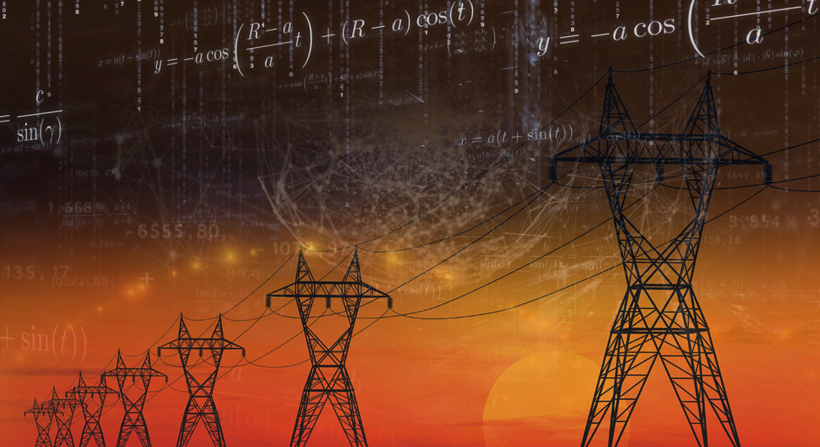
Digital Measurement
At the core of 3DFS technology is the ability to measure absolute electrical parameter values at the nanosecond level. This alone is of considerable value. Right now, anywhere in the world, including in all of the live electrical environments that power our homes and businesses, electricity is not precisely measured, rather it is semi-accurately calculated using integrated RMS values, which are simply averages. This matters because without the ability to precisely measure, how is it possible to truly inventory?
The nonstop digital precision measurement of electricity generates a lot of data. In fact, it requires more processing power than is possible using a standard linear computing method. Incredibly, it requires more processing power than even matrix computing can provide. To be able to achieve the absolute measurement of electricity at the nanosecond level, the engineers at 3DFS invented a new form of computing, called conveyor matrix computing.
This immensely powerful tool is the brains behind the operation, with the ability to continuously process enormous volumes of data at lightning quick speeds. It allows for the instant streaming calculation of more than two dozen electrical parameters with ultra-high resolution. This continuous stream of energy data provides a digital picture of the real time bidirectional electrical energy flow of the network.
Maintaining constant awareness of the bidirectional flow provides baseline data and normal tolerances for what is considered energy flow during typical operation. When there is an abnormal event that exceeds those tolerances, software can immediately report to a user creating a flexible electrical network monitoring system with instantaneous feedback that is completely controlled by software. It is the equivalent of an electrical nervous system.
This visibility facilitates pinpoint accuracy when identifying electrical events and opens up a breakthrough approach to electrical signature analysis including non-intrusive load monitoring and predictive analytics.
Electrical Correction
Examining and researching electricity in this newfound manner altered our understanding of electricity and electrical energy flow. It changed our perspective on searching for ways that electricity can be controlled and led to a new discovery and eventually a new principle of controlling electricity.
A live electrical network environment is a real time, demand driven, imbalanced tug of war among multiple forces; capacitance and inductance, power and resistance, etc. All of these forces are inextricably interconnected and affect one another in an unending number of ways, but cumulatively make up the electrical energy flow for that network.
Visually, electrical energy flow is represented as waveforms, both current and voltage.
In an ideal environment, those waveforms would always be perfectly sinusoidal and aligned and that would represent the perfect distribution and consumption of electricity.
In reality, those waveforms are distorted, misaligned and imbalanced, representing unstable distribution and inefficient consumption of electricity.
Leveraging nanosecond measurements, Kirchoff’s Law, and the incredible power of conveyor matrix computing, 3DFS technology calculates the exact microsecond to either inject or extract the precision amount of counter-current required to rebalance and correct the electricity flow.
From a waveform perspective, the system is injecting current when it is under and extracting current when it is over on each incoming wire every microsecond. This suppresses the distortions and noise that are created by the loads through their non-linear use of electricity and optimizes the electrical energy flow.
Using the nervous system analogy, electrical correction uses the awareness and feedback from the precision measurements to instantly determine and execute a response. In other words, 3DFS precision measuring would be the component that alerted you of an itch and 3DFS electrical correction would be the hand that scratched it.
Live response electrical correction is constantly performed every microsecond, bidirectionally while the system automatically calculates for an equal consumption balance across the incoming phases resulting in an electrical energy flow with the highest efficiency and power quality with the lowest carbon footprint.
It is important to note that this is universally a new principle of controlling electricity and is applicable at any voltage. Electrical correction considerably reduces energy consumption, electrical losses and utility penalties, opening up new markets and providing flexibility and elasticity to any electrical network or grid.
Artificial Intelligence
Precision control and management of the bidirectional flow of electricity demonstrates that the world in the wires is universally controllable using the basic laws of math and physics. Leveraging the immense processing power, artificial intelligence algorithms infused throughout 3DFS technology perpetually analyze the correction data and automatically adjust for improved performance. The software instantly adjusts and conforms to the electrical network becoming more efficient and further improving the network stability over time.



frank solchaga
keep me informed
Richard
Can you explain the differences between your product and the 3-phase active filters that are already commerically available?
Christopher Doerfler
There is a world of difference, but in a nutshell, active harmonic filters do not use any sort of advanced computing to perform real time calculations in order to autonomously correct the harmonic distortion. They simply absorb the energy and release it as heat. There is a minor improvement effect for the loads and the network for a limited amount of time, before the problem returns, usually worse than before. Active harmonic filters do not solve the problem with harmonics, they mask them.